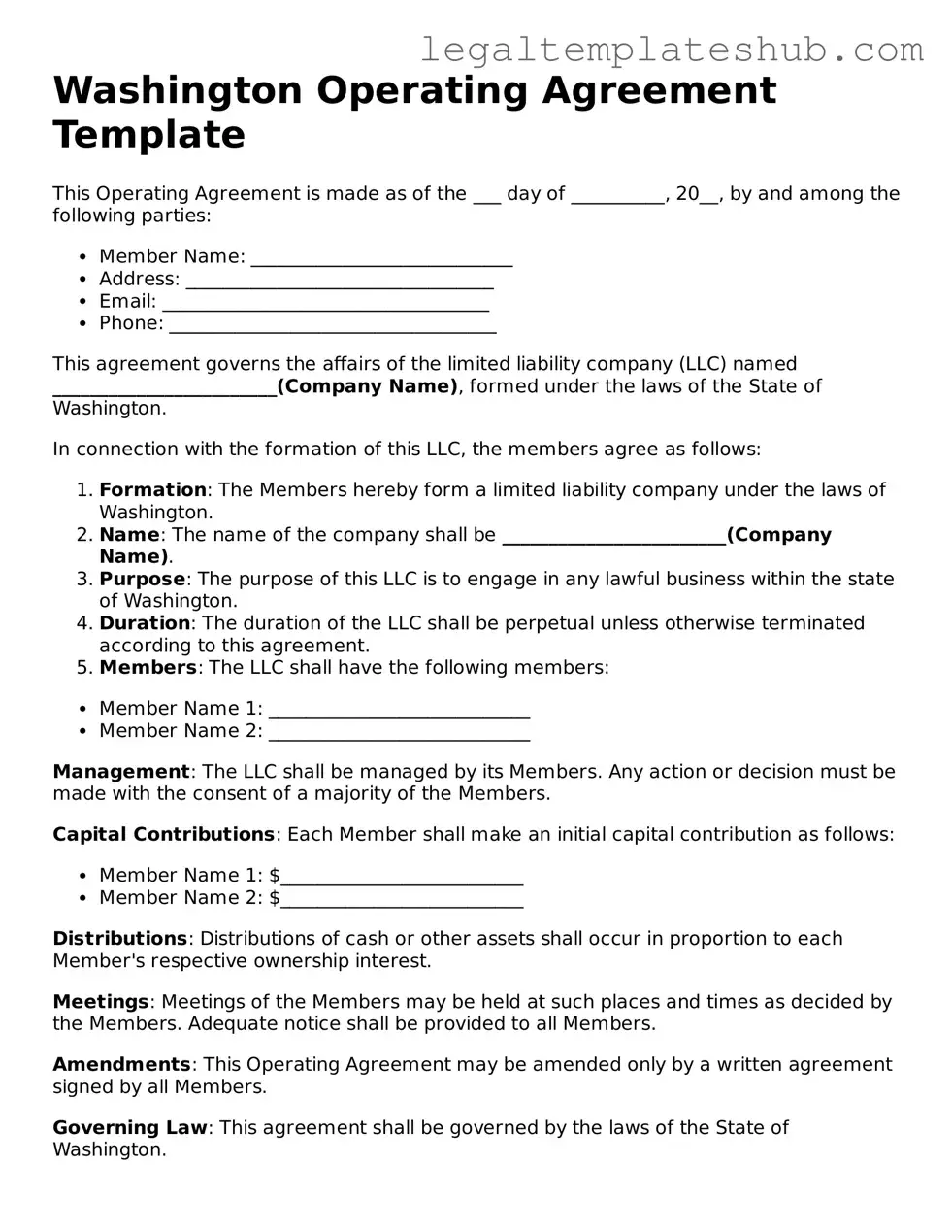Printable Operating Agreement Document for Washington
The Washington Operating Agreement form is a crucial document that outlines the management structure and operational procedures of a limited liability company (LLC) in Washington State. This agreement serves as a foundational blueprint for members, detailing their rights, responsibilities, and the distribution of profits and losses. To ensure compliance and clarity, it is essential for LLC members to complete this form accurately.
Ready to get started? Fill out the form by clicking the button below.
Access Editor
